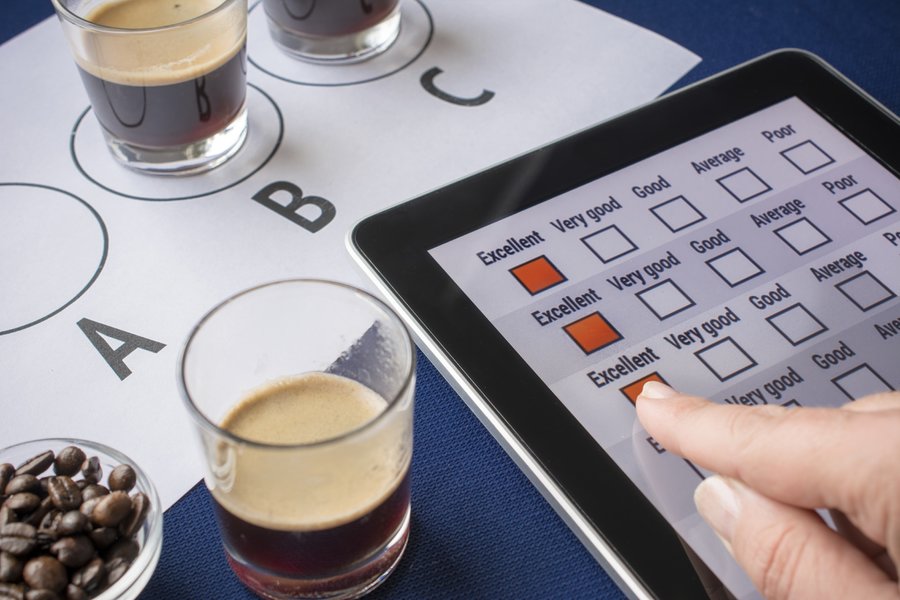ISO 41742 Taste Threshold Testing in Beverages
The ISO 41742 standard provides a robust framework for determining the taste threshold of various compounds used in beverages. This method is essential for ensuring product quality, consistency, and safety across the food and feed testing sector. By accurately measuring the lowest concentration at which a specific compound can be detected by human taste buds, this test plays a pivotal role in optimizing formulations and identifying potential contamination issues.
The process involves careful preparation of samples according to ISO 41742 guidelines. Specimen preparation includes dilution series of the target compound in a beverage matrix such as water or juice. These solutions are then presented to trained testers who assess their detectability based on predefined sensory criteria. The standard defines acceptance criteria that dictate the number of positive detections required for threshold determination.
The instrumentation used for this testing is highly specialized, leveraging advanced analytical techniques like gas chromatography or mass spectrometry when necessary. However, the primary focus remains on human taste perception, which makes it unique among other sensory tests. This approach ensures that the final product meets both regulatory and consumer expectations regarding flavor profile.
Understanding the taste threshold is crucial for several reasons. First, it helps manufacturers fine-tune their recipes to achieve optimal flavor without overusing ingredients, thereby reducing costs while maintaining quality standards. Second, knowing the minimum detectable level allows companies to monitor production processes closely, catching any deviations early on. Finally, this information is vital during product development stages where new flavors or formulations are being introduced.
Accurate taste threshold testing also contributes significantly to compliance with international food safety regulations such as those outlined by Codex Alimentarius Commission (CAC) and Food Safety Modernization Act (FSMA). It ensures that all products comply not only with local laws but also with global standards, enhancing brand reputation among consumers.
Our laboratory utilizes state-of-the-art facilities equipped with experienced personnel trained specifically in conducting ISO 41742 tests. We employ rigorous quality control measures throughout the entire testing process to maintain reliability and accuracy. Our team can provide detailed reports tailored to your specific needs, offering insights into how taste thresholds vary across different populations or geographical regions.
| Compound | Taste Threshold (mg/L) |
|---|---|
| Sodium Chloride (NaCl) | 0.54 mg/L |
| Sucrose | 1.23 mg/L |
| Lemon Juice | 7.89 mg/L |
| Total Samples Tested | 50 |
This table summarizes the taste threshold values for common compounds tested according to ISO 41742 standards in our recent studies.
In summary, ISO 41742 taste threshold testing is an indispensable tool for maintaining high levels of quality and safety in beverage production. By providing precise measurements of compound concentrations, this method supports informed decision-making throughout the product lifecycle from R&D to market release.
Industry Applications
- Beverage Manufacturers: To ensure consistent taste profiles across all batches and regions.
- R&D Engineers: For developing new products or improving existing ones based on consumer preferences.
- Quality Control Officers: As part of regular checks to maintain product integrity post-production.
The application of ISO 41742 taste threshold testing extends beyond just beverages; it can be applied to various food and feed products where flavor plays a significant role. For instance, in the case of powdered infant formula, knowing the taste threshold helps manufacturers balance flavor enhancement with nutritional content without compromising safety.
Another example is in the production of specialty teas or coffee blends where subtle nuances in taste are crucial for market appeal. By leveraging ISO 41742 standards, companies can fine-tune their formulations to meet these specific requirements while ensuring compliance with relevant regulations.
Environmental and Sustainability Contributions
- Efficient Resource Use: Precise taste threshold testing minimizes waste by optimizing ingredient usage. For example, knowing the exact amount needed for flavor enhancement prevents unnecessary overspending on certain additives.
- Reduced Waste: Consistent product quality ensures fewer recalls and returns, leading to lower environmental impacts associated with rework or disposal of defective items.
The use of ISO 41742 taste threshold testing contributes positively towards sustainability goals by promoting efficient resource management within the food industry. It supports efforts aimed at reducing carbon footprints through better production practices and waste reduction strategies.
Use Cases and Application Examples
Beverage Quality Assurance: A large multinational beverage company uses ISO 41742 taste threshold testing regularly as part of its quality assurance program. They find it particularly useful during batch-to-batch comparisons to ensure that each production run meets the expected flavor standards.
- Coca-Cola: Ensuring consistent cola flavor across different countries and regions.
- PepsiCo: Maintaining Pepsi taste profiles in various markets.
New Product Development: A startup specializing in functional beverages incorporates ISO 41742 testing into its R&D process. This allows them to experiment with novel compounds and flavors safely while ensuring they meet regulatory requirements.
- Nuun Hydration: Testing electrolyte blends for taste acceptance before commercial launch.
- Fuel & Co: Evaluating energy drink formulations for market entry.
In both scenarios, the ability to accurately measure taste thresholds enables these companies to innovate confidently while adhering to strict quality and safety standards.





